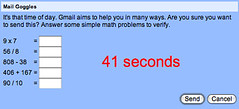Okay, so I sent the meeting link in the channel. I can see it. It’s right there. It’s literally three messages up from where we are now. There’s Todd’s message about lunch, there’s Karen’s GIF of a confused dog, and then there’s MY MESSAGE with the Zoom link clearly visible.

“Hey, can someone post the meeting link?”
I stare at my screen. I stare at the link I posted seven minutes ago. I stare at the three messages between now and then. I wonder if I’ve slipped into an alternate dimension.
“I posted it at 2:47,” I type back.
“Where? I don’t see it.”
IT’S RIGHT THERE. I’m looking at it. It exists. It has a timestamp. It has a little Zoom preview icon. It is OBJECTIVELY PRESENT in this channel.
“Scroll up like three messages,” I say, because I’m trying to be helpful and not scream.
“I did. It’s not there.”
I take a screenshot. I post the screenshot OF THE MESSAGE THAT’S IN THE SAME CHANNEL. I feel like I’m taking a picture of a ghost to prove ghosts are real.
“Oh weird, I see it now!”
DO YOU THOUGH? Do you REALLY? Because you didn’t see it five seconds ago when it was in THE EXACT SAME PLACE. What changed? Did the message finally load? Did it get approved by some cosmic moderator? Did it have to pass through customs?
This happens approximately 47 times a day now. Someone asks for something I JUST posted. I look at my screen. The thing is RIGHT THERE. It’s not hidden. It’s not in a thread. It’s not a reply. It’s just… a message. In the channel. Where messages go.
But apparently I’m the only one in the quantum reality where this message exists.
“Did you get my email?” – Yes, I replied two hours ago. “What’s the status on that ticket?” – Updated it this morning, it’s in the channel. “Can you send me the document?” – I literally just dropped it in Slack with an @mention to you specifically.
And I’M the one who ends up looking like I didn’t do the thing, when the evidence of me doing the thing is RIGHT THERE IN THE CHAT HISTORY, visible on my screen, laughing at me.
My new theory is that we’re all just living in slightly different timelines that occasionally sync up, like some kind of distributed systems disaster. You’re seeing messages from Timeline B. I’m seeing messages from Timeline A. Occasionally they merge and someone goes “oh weird, now I see it!”
Or maybe – and hear me out here – maybe Teams/Slack just… doesn’t actually send messages reliably? Maybe it’s all smoke and mirrors? Maybe when you hit send, there’s like a 30% chance the message just goes to the void? Maybe there’s some poor server somewhere that’s just giving up and going “eh, close enough” when it comes to message delivery?
Because I KNOW I’m not crazy. The message is there. I can see it. I can click on it. I can copy the link to it. It has a permalink, for crying out loud. Permalinks don’t lie.
But sure, let me just re-post the same information for the fourth time while staring at the three previous times I posted it, all of which are apparently visible only to me, like I’m the Ghost of Messages Past.
At this point I’ve started prefacing everything with “I’m about to post something that may or may not actually appear for anyone else, but here goes…”
And then someone STILL asks me for it five minutes later.
Is this gaslighting? Am I being gaslighted by enterprise chat software? Is this what it feels like to lose your mind in real-time?
The worst part is when you send the permalink to the message directly and they STILL can’t see it. You’re sending them a direct URL to the exact message, and they click it and get… nothing? An error? A blank screen? The message equivalent of a 404?
“Yeah it says I don’t have access to that message.”
IT’S IN THE SAME CHANNEL YOU’RE IN. YOU’RE LITERALLY LOOKING AT THE CHANNEL RIGHT NOW. THE MESSAGE IS INSIDE THE CHANNEL. THAT’S WHERE MESSAGES LIVE.
I’m starting to think we should just go back to email. At least when you send an email, everyone gets the same email. Sure, it’ll end up in spam, and nobody will read it, and someone will reply-all with “please remove me from this list,” but at least we’ll all be experiencing the same reality.
Unlike now, where I’m apparently the only person who can see my own messages.
Which, come to think of it, would explain a lot about my performance reviews.








